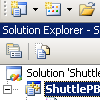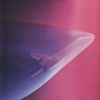OrbiterWiki:Random tutorial
Random tutorials displayed on the Main Page are selected from the following list. Every tutorial in the list has an equal chance of appearing on the Main Page. Feel free to add more - just edit this list!
Note that you must be a registered user to edit this list.
List
These are all the articles which have a precis and can appear on the Main Page. The articles are listed alphabetically.
|
Free Compiler Setup. Many Orbiter add-ons come with source code which can be compiled using the free Visual Studio. However, there are a few things that need to be done to make Orbiter projects compile in it. This tutorial goes through the steps necessary to configure Visual Studio for use with Orbiter. (More...)
|
|
Go Play In Space, Chapter 1. Go Play In Space is the classic introduction to Orbiter for new orbinauts and those looking to expand their horizons. Chapter 1 will help you get up and running with a basic setup. (More...)
|
|
Go Play In Space, Chapter 2. Go Play In Space is the classic introduction to Orbiter for new orbinauts and those looking to expand their horizons. Chapter 2 will teach you to maneuver your ship with a challenge to rescue another ship in trouble! (More...)
|
|
Go Play In Space, Chapter 3. Go Play In Space is the classic introduction to Orbiter for new orbinauts and those looking to expand their horizons. Chapter 3 starts you off on the Moon for some more advanced maneuvering. Prepare to hover, watch those instruments, and exercise your fine motor skills. (More...)
|
|
Go Play In Space, Chapter 4. Go Play In Space is the classic introduction to Orbiter for new orbinauts and those looking to expand their horizons. Chapter 4 takes you from launch on Earth to a pinpoint landing on the Moon, complete with planning, navigating, and piloting. (More...)
|
|
Go Play In Space, Chapter 5. Go Play In Space is the classic introduction to Orbiter for new orbinauts and those looking to expand their horizons. Chapter 5 teaches the mysterious art of matching your ship’s trajectory with another in low earth orbit. You’ll rendezvous with the International Space Station orbiting at 17,000 mph, and gently dock to join the crew there. (More...)
|
|
Go Play In Space, Chapter 6. Go Play In Space is the classic introduction to Orbiter for new orbinauts and those looking to expand their horizons. What goes up generally comes down, ideally in one piece! Chapter 6 teaches the fine art of reentry and landing. (More...)
|
|
Go Play In Space, Chapter 7. Go Play In Space is the classic introduction to Orbiter for new orbinauts and those looking to expand their horizons. The Solar System awaits! Chapter 7 takes you from Earth to Mars, teaching the skills you need to reach any planet. (More...)
|
|
Go Play In Space, Chapter 8. Go Play In Space is the classic introduction to Orbiter for new orbinauts and those looking to expand their horizons. Chapter 8 provides a guide to many of the best sources of tutorials to further enhance your skills. (More...)
|
|
Go Play In Space, Chapter 9. Go Play In Space is the classic introduction to Orbiter for new orbinauts and those looking to expand their horizons. Chapter 9 provides a guide to the main resources for add-ons to expand on Orbiter’s built-in capabilities, with additional tools and spacecraft. (More...)
|
|
Go Play In Space, Chapter 10. Go Play In Space is the classic introduction to Orbiter for new orbinauts and those looking to expand their horizons. Chapter 10 addresses the age-old question: Is it safe to let the Wookie drive? They might not all be frequently asked, but many questions are answered here. (More...)
|
|
Go Play In Space, Epilog. Go Play In Space is the classic introduction to Orbiter for new orbinauts and those looking to expand their horizons. Admit it: You’ve wondered if you can find a space-related career. This Epilog can help you focus your ambition. (More...)
|
|
The IMFD Full Manual is the definitive reference for the Interplanetary MFD. The entire text is available here, and the scenario/playback files for the tutorials can be downloaded as well. (More...)
|
|
Intuitive Atmospheric Reentry. It is a common complaint on the Orbiter message boards that the aerodynamics on the Space Shuttle model are screwed up. This is usually reported after a person deorbits the vehicle, puts it in the right angle of attack... and then bounces off the atmosphere several times and overshoots the Cape. I know, I've done it myself. Here's how to enter the correct way. (More...)
|
|
LEO-lunar transfer tutorial. "... Congratulations, you're on your way to the Moon. So, a couple of days later... You've arrived! The Moon is getting pretty big in the viewscreen. Really big. Too big in fact. Oh dear, we're about to impact the lunar surface at some 17,000 miles per hour. Now what?" (More...)
|
|
In spaceflight, rendezvous refers to the event in which two spacecraft meet. This can occur in space or on the surface of a celestial body. A rendezvous usually takes place in orbit, e.g. when spacecrafts are travelling to a space station. If two spacecraft are close enough to each other (< 300m) and travel in similar orbits they are said to rendezvous. In such a situation, both spacecraft can stay close to the space station with minimal corrections. (More...)
|
| A Symplectic Integrator. An explanation of how to set up a certain type of numeric integrator, a key aspect of celestial mechanics calculations, such as those performed by Orbiter Space Flight Simulator. (More...)
|
|
Your first flight. For an introductory flight for a novice Orbiter user, a good start is the Delta Glider docked to the ISS. This way, you can explore orbital mechanics, use of RCS thrusters, and docking with the most user-friendly standard craft in Orbiter in a forgiving space environment. (More...)
|
Example
Below is an example of a random article generated by the list:
In spaceflight, rendezvous refers to the event in which two spacecraft meet. This can occur in space or on the surface of a celestial body.
A rendezvous usually takes place in orbit, e.g. when spacecrafts are travelling to a space station. If two spacecraft are close enough to each other (< 300m) and travel in similar orbits they are said to rendezvous. In such a situation, both spacecraft can stay close to the space station with minimal corrections. (More...)
















